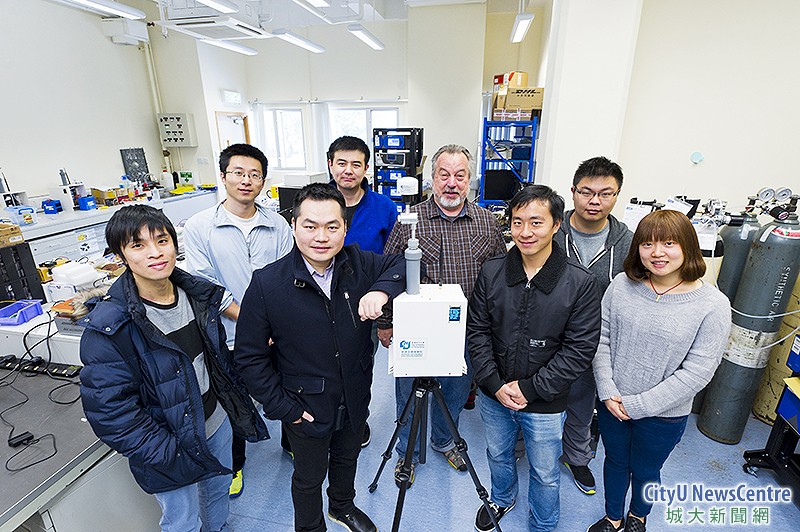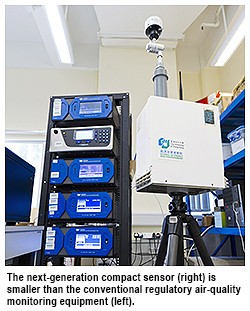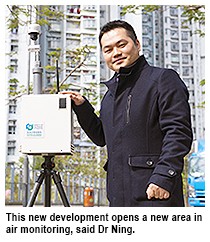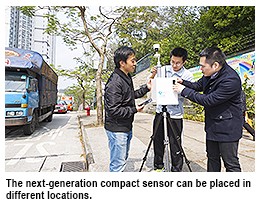CityU develops cutting-edge air monitoring sensor package
A next-generation compact sensor package developed by City University of Hong Kong (CityU) can measure multiple criteria air pollutantssimultaneously, and can be readily placed in different locations to meet diverse monitoring needs.
The team developed the microelectronic circuits and a compact sensor platform by integrating high-time resolution sensors. The sensor system can display and store real-time data, then automatically transmit the data via various wireless protocols, including GSM (cell phone network), Wi-Fi, Bluetooth, Xbee, among others, to off-site computers for analysis and display.
The pollutants measured include nitric oxide (NO), nitrogen dioxide (NO2), carbon monoxide (CO), carbon dioxide (CO2), ozone (O3) and particulate matter (PM2.5), which are important indicators of health risks. Several are emitted by urban traffic.
Dr Ning Zhi, Assistant Professor in CityU’s School of Energy and Environment, and his team designed, developed and characterised the system extensively to achieve the best performance for challenging monitoring needs.
The sensor package is small, portable and far more suitable to diverse uses than conventional regulatory air-quality monitoring equipment. It is 30cm wide, 30cm high and 22cm long, and weighs 10kg. However, its functions and performance are comparable to the conventional bulky and heavy equipment, but is only one-twentieth of the cost. The package is being considered for use to monitor air quality at different locations in Hong Kong to complement the government’s scheme.
"The package may be battery powered and its portability means it can be placed in locations not possible before by conventional large monitoring systems. This new development opens a new area of air monitoring and allows the deployment of monitoring schemes that target special environmental exposure situations and community monitoring locations, like schools, office buildings and homes." said Dr Ning.
"The package is expected to be widely used in different cities to help research air pollution, air quality management and environmental policy making in the future, and there are plans to augment it to include other important pollutants." he added.
Dr Ning’s team has also developed a protocol to convert raw data collected by the sensor into the Air Quality Health Index (AQHI) currently used in Hong Kong. In its first public use five of these units were placed along the Standard Chartered Marathon route last month where data were collected and served as the basis to communicate the AQHI values to the runners, organiser and public. The monitoring was conducted successfully.
The research has been partially supported by the Environmental Protection Department and the Innovation and Technology Fund of the Hong Kong Government.




